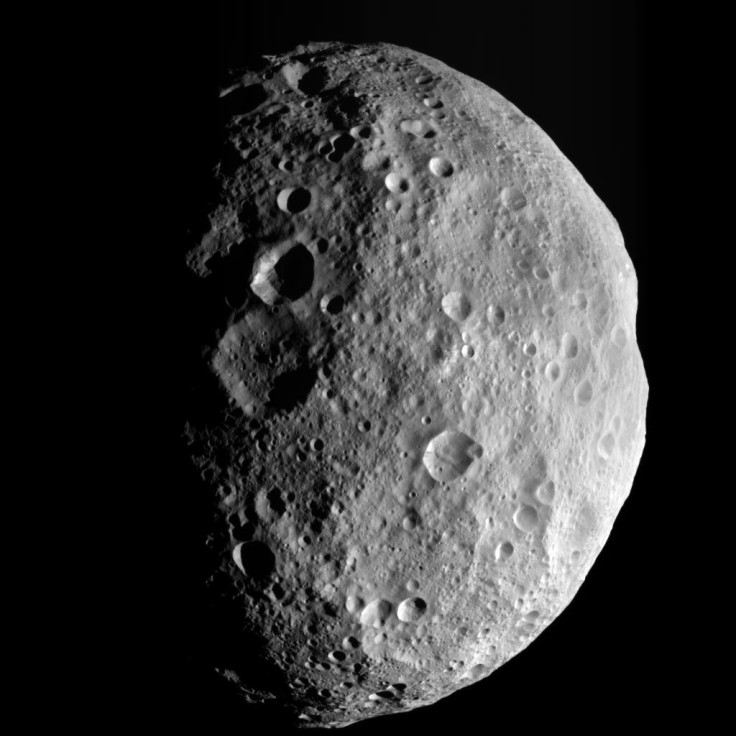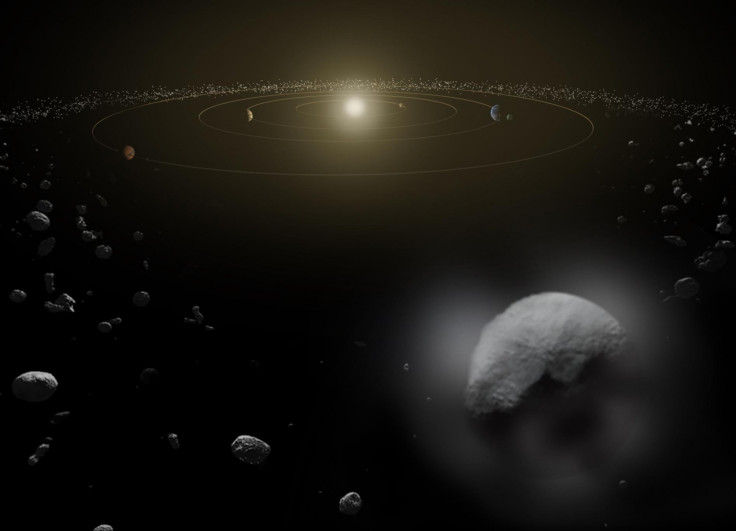Asteroid Vesta: Solar system's second-largest asteroid may host buried ice
Data from Nasa's Dawn mission suggests that the asteroid may contain ice buried under its surface.

The giant asteroid Vesta, the solar system's second-largest asteroid may contain ice buried underneath its surface, according to a new study. Data from Nasa's Dawn spacecraft, which orbited Vesta between 2011 and 2012, also suggests that the onion-like structured asteroid may once have possessed a magnetic field.
Vesta, the 530km-wide (330 miles) planetary body that lies in the asteroid belt between Mars and Jupiter is so massive that it is also visible to the naked eye sometimes from Earth. Vesta is second only to the giant asteroid Ceres, which has also been classified as a dwarf planet.
The new study found that any roughness on Vesta's surface, which was previously thought to be due to craters formed after occasional collisions with other asteroids, may actually be due to ice buried underneath the asteroid's surface. Scientists analysed large patches of the asteroid's smooth surfaces, which they found often contained a high concentration of hydrogen. This is usually observed after water molecules have been broken down by solar radiation.
"Our results suggest that unlike the Moon, Vesta's surface roughness variations cannot be explained by cratering processes only. In particular, the occurrence of heightened hydrogen concentrations within large smoother terrains (over hundreds of square kilometres) suggests that potential ground ice presence may have contributed to the formation of Vesta's current surface texture," researchers said in their study, published in the journal Nature Communications.
The researchers also found additional data from Dawn that indicated the presence of buried ice on Vesta. For instance, a 2015 study of the asteroid revealed that despite Vesta's cold surface and lack of atmosphere, the asteroid may contain traces of water.
"It is surprising to see more evidence of ground ice on Vesta," Essam Heggy, a planetary scientist at the University of Southern California in Los Angeles and co-author of the study, told Space.com.
"Vesta was expected to be a desiccated body. The new findings also suggest that the asteroid could contain ice at a much larger scale. Ice may also have played a more significant role in the evolution of Vesta than previously thought," Heggy added.
Scientists are now looking to further examine Ceres to determine whether the solar system's largest asteroid could also contain ice. According to Heggy, knowledge about the presence of ice on asteroids is of "major importance" as it can help researchers understand "the transport and evolution of water-rich materials in our solar system".

© Copyright IBTimes 2025. All rights reserved.






















